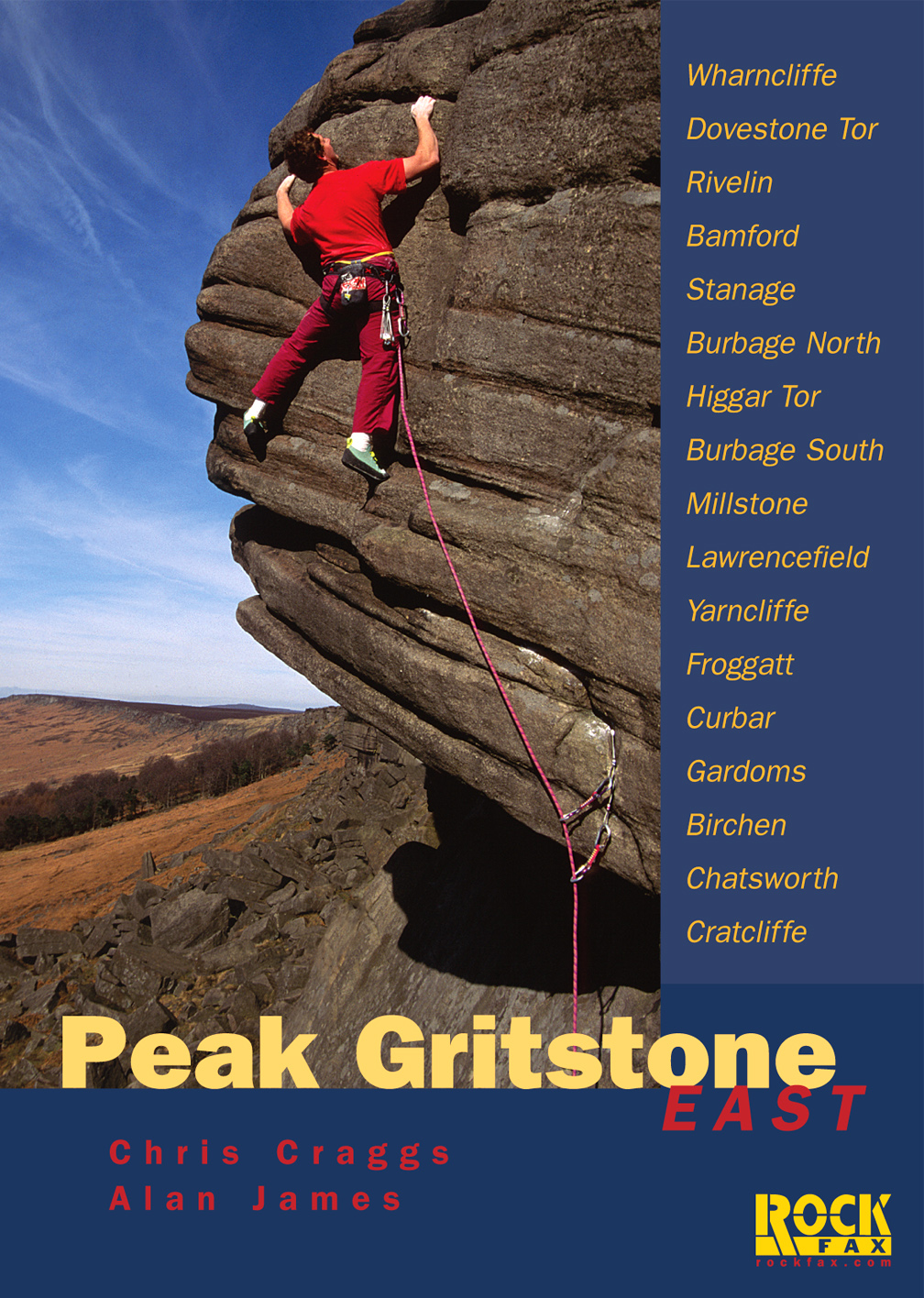| Published | 2001 |
|---|---|
| Authors | |
| Location | |
| Next Edition | 2006 |
| Rockfax Number | Fax14 |
Peak Gritstone East (2001)
This majestic full-colour celebration of the best climbing on the eastern edges of the Peak District covered all the major buttresses from Wharncliffe to Cratcliffe including Stanage, Burbage, Millstone, Froggatt and Birchens plus many more. When published in 2001 it set a standard which all other UK guidebooks have had to try and live up to by establishing bright, full-colour, highly-detailed photo-topos and maps as the standard method for displaying climbing information.
“Because this book is as close to perfect a guidebook as we are likely to get.”
Ed Douglas writing about Peak Gritstone East, Climber Magazine – Feb 2002



Ed Douglas, Climber Feb 2002 –
I think we may just have set the guidebook world on fire, ‘Chris Craggs writes in his acknowledgements to the new Rockfax Peak Gritstone East which covers Stanage, the Burbages – Mr and Mrs – Millstone, Froggatt, Curbar and so forth. There may be more than a hint of irony here, since relations between Craggs, his publisher and co-author Alan James, and the British Mountaineering Council have at time resembled a Sydney suburb in January. The BMC believe that Rockfax are stripping customers away from their voluntarily produced comprehensive guidebooks and Rockfax believe they are giving climbers what they want. But you don’t want to know about politics, do you? You want to know whether to buy the thing. The short answer is yes. Oh yes. Buy two, one for the toilet and one for your rucksack. Why? Well, there’s a short answer to that too. Because this book is as close to perfect a guidebook as we are likely to get. Part of it is in the refinement of the Rockfax style present in their latest and perhaps boldest outing. They understood very quickly that climbers, like the rest of the British public, were becoming graphically sophisticated and they use the latest technology to deliver it. People are now more used to absorbing information in this way than wading through thick chunks of text. (I can hear the sound of traditionalist axes being sharpened. Well, tough banana.) The guide uses a combination of topos, photodiagrams and pithy descriptions in a visually sumptuous production that leaves previous attempts standing. Its format is a little like a computer program which you can use immediately but which has features that are helpful that you learn. Full colour helps in this, since route numbers are reversed out of a colour, each one referring to a band of grades, with green being the easiest. Cunning, eh? It’s a selective guide, of course, so true aficionados will be looking forward to the BMC’s new Stanage volume, but most climbers will be content just to own this version. Some readers will be shocked at the absence of a historical section. The barbarians are at the gates, they will cry. Nincompoops. In the days when there were few rock climbers and few books on the subject, Menlove Edwards’s guidebooks made perfect sense, rich in detail and atmosphere. But the world has changed since the 1930s. What we the chalk-dipping public want is an outstanding guidebook and an outstanding history of Peak District climbing. Now we have at least one of them. And it’s worth bearing in mind that the British didn’t invent the topo guidebook. But Rockfax have absorbed the new format and added a very British passion and depth that rewards close scrutiny. I pored over this volume, despite the propaganda that Rockfax guides are dull, noticing gaps on Stanage where I’d never climbed admittedly not very big gaps – drawing up new objectives and generally feeling a burbling enthusiasm for gritstone, despite being pretty darned enthusiastic in the first place. The visual impression is more like visiting the crag than thumbing a guidebook. Any criticisms? Well, a few black and white historical shots would have been nice, and some of the grades seem a bit wonky. Grade inflation is one of those things, like quantum mechanics and self-assessment tax returns, that are beyond me but I’m sure the experts know what they’re doing. But to criticise the choice of photographs seems too harsh, since the book is stuffed full of inspiring shots, some of them of routes that I haven’t done which it’s just possible I might. Oh God. And I was so looking forward to middle age.